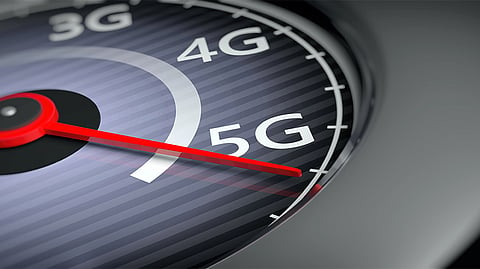DHL Explores the Future of Wireless IoT in Logistics
DHL has released “Next-Generation Wireless in Logistics”, a new Trend Report that offers a comprehensive look at the evolution of wireless networks and the future of the Internet of Things (IoT) in logistics.
Even before the current COVID-19 crisis, wireless communication technology was making headlines.
Much of the recent interest has focused on 5G mobile data networks that are being rolled out in many countries.
5G promises a host of benefits for end users, businesses, and telecommunications systems operators alike, including higher speeds, greater capacity, and tailored services for a new generation of smart connected devices.
Well-known technologies like WiFi and Bluetooth, and lesser-known technologies like Low Power Wide Area Networks (LPWAN) and Low Earth Orbit (LEO) Satellites have been enhanced for industrial use.
These next-generation wireless technologies will enable the next step in the communication revolution, moving towards a new world in which everyone and everything can be connected everywhere.
Building a fully connected future for logistics
In a recent survey of 800 supply chain leaders conducted by DHL, 60% of respondents stated that visibility of their supply chain is currently inadequate.
The top three key challenges among the respondents are achieving true end-to-end visibility, lack of a single centralized platform to drive IoT initiatives, as well as fragmented data collection from inherently heterogeneous supply chains.
The top three priorities identified shaping visibility strategies are end-to-end transportation visibility, inventory visibility, and the implementation of supply chain data analytics.
DHL Partners with Tabby to Offer COD for e-Commerce Orders in the UAE
75% of respondents reported they intend to implement at least one next-generation wireless technology in the near future to achieve their visibility goals.
Markus Kückelhaus, Vice President Innovation & Trend Research, DHL Customer Solutions & Innovation said: “Logistics, will be both a major beneficiary of the IoT-enabled digital revolution and an enabler of it.
"Although some parts of the logistics industry are already smart and connected, next generation-wireless is set to usher in the next wave of IoT in logistics.”
In a future where everyone and everything is online everywhere, three key things will become possible for the logistics industry:
Total Visibility: Every shipment, logistics asset, infrastructure, and facility will be connected thanks to widely available networks and inexpensive high-performance sensors.
Wide-Scale Autonomy: All autonomous vehicles, whether indoor robots or logistics vehicles on public roads, rely on ultra-fast, reliable wireless communication to navigate and traverse their worlds effectively.
Perfecting Prediction: Data-driven prediction systems for forecasting, delivery timing and routing may no longer be constrained by latency and performance of wireless networks.
Explains Matthias Heutger, SVP, Global Head of Innovation & Commercial Development, DHL: “Large-scale connectivity is an extraordinary technological and social success story. While IoT is not new in logistics, with 20 billion connected devices already in use globally, this story is still only just beginning.
"A myriad of technologies are simultaneously advancing at a rapid rate, which are also cost effective and increasingly ubiquitous. They are now becoming more accessible which suddenly opens up vast opportunities for the development of applications and use cases at an unprecedented rate.
"We highlight how the potential associated with these technologies is fast becoming a fundamental part of the supply chain of tomorrow.”
Read More: DHL Starts Dedicated Air Freight Service from China to MENA Region


